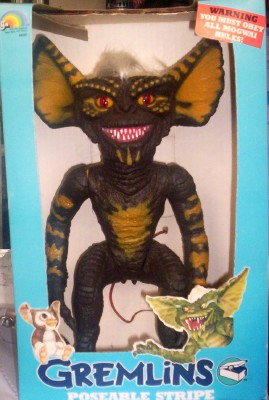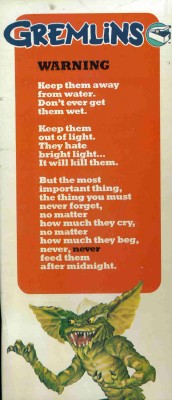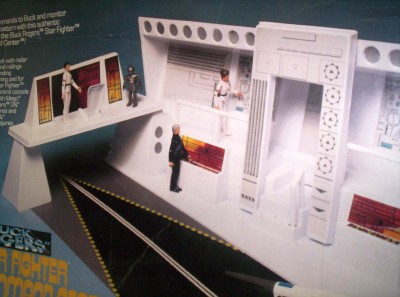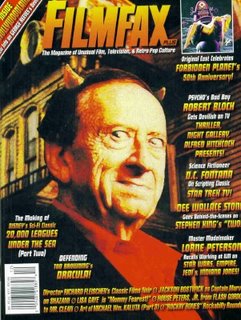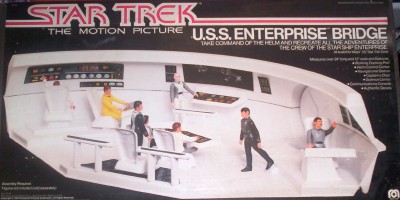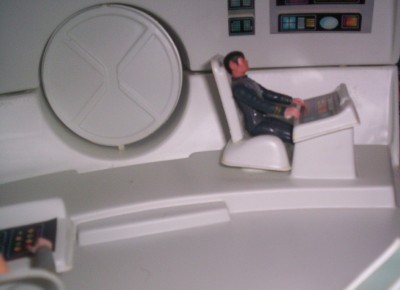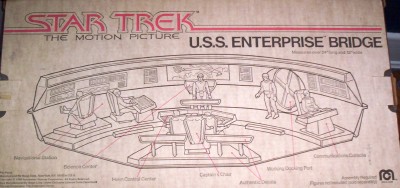Jamie Lee Curtis portrayed Laurie Strode in Halloween (1978), a beloved character who remains one of the most memorable (if not THE most memorable...) of the "final girl" archetypes in the slasher film paradigm. Given this fact, it seems oddly appropriate and resonant that the self-same actress would essay the role of Megan Turner, another endangered woman, in the 1990 horror-thriller Blue Steel.
In this film, another likeable Laurie Strode-type, the aforementioned Megan, is all grown up and getting her feet wet in the male-dominated world of law enforcement. During the course of the movie, the audience learns that this newly minted cop faces a number of challenges. Foremost among these, the amorphous "bogeyman" or "Shape" of adolescence (the menace dominant in Halloween) has changed; morphed into a threat even more frightening and endangering to both female adulthood and female independence. This menace is more traditionally realistic than Michael Myers, you might conclude...but no less unkillable: a patriarchal society that breeds male maniacs and which dominates and subjugates women.
In the course of Blue Steel, adult Megan encounters horrors unimagined by teenager Strode. She is sexually violated by a stalker (in a brutal rape scene), made the object of sexual prejudice on the force (by a wrong-headed police superior and Internal Affairs...), and deemed unacceptable by a society at large, which would prefer to "box up" women in traditional career roles like homemaker or office secretary. Why? Well, a female cop "scares off" men, as Megan is thoughtfully informed by a prospective date named Howard.
"Why would you want to become a cop?," he asks her with utter contempt. "You're a beautiful woman..."
By point of contrast, slasher Michael Myers - whether deemed an unstoppable force of nature like the shark in Jaws, a supernatural avenger, or a killer with the mentality of a child playing "trick or treat" - never touched Laurie or Annie or any other victim in an overtly sexual manner; never threatened to destroy a woman's standing in society. His threat was simple (though inescapable): a big, sharp kitchen knife matched with the desire and strength to kill. The threat in Blue Steel has in the early 1990s (the era of Anita Hill...) grown much more personal in that it is Megan's body and sexual person that is imperiled. And also, paradoxically, more generalized in that society neither protects nor approves of a female who wields power that might be traditionally termed "male." Megan's attempt to "be strong," has in fact, rendered her society's victim. This unacceptable notion (a woman cop) is what draws the moth to the flame; which brings the killer's obsession into focus.
But I get ahead of myself. Blue Steel, directed by Kathryn Bigelow (Near Dark) is Megan's story of self realization. She's a newly graduated female cop who prevents a burglary in a grocery store by shooting a violent (and armed...) assailant. One of the men in the store, a deranged customer named Eugene Hunt (Ron Silver), witnesses Megan's demonstration of lethal force and and becomes unhealthily obsessed with her. He stalks her, and even steals the dead assailant's gun from the crime scene; treating it as though it is an object of religious significance.
Megan quickly finds herself in trouble with her superiors in the police department because it now appears she killed an unarmed man. Her judgment is questioned. Since she's a woman, did she "panic" when confronted with a crime, and kill a man unnecessarily? That's the question! And make no mistake, it arises from our society's preconceived notions of male/female sex roles. A man's control of his emotions and particularly his fear, wouldn't be questioned quite so readily, would it?
So while Megan is suspended for the unauthorized use of the deadly force, her stalker, Hunt, begins to randomly kill people on the streets...and inscribes his bullets with Megan's name. At the same time, Megan begins dating Eugene - who works on Wall Street - unaware that he is actually the wolf in sheep's clothing, the menace systematically taking apart her life. Hunt, the so-called "44 Magnum Killer" and Megan, the female cop, soon share a "You Made Me/I Made You" dynamic (see 1989's Batman), which finally ends in a fierce shoot-out which balances Eugene's "weapon" (i.e. gun) against Megan's. Eugene, threatened and attracted by the show of force represented by a female cop, now feels the need to assert his dominance over her by using the same tool to destroy her. In other words, it is a pissing contest, and Eugene is threatened because a woman has dared to wield more power than he. He is abetted by a society which also disapproves of a man's "power" in the hands of a female.
Blue Steel is undeniably a child of Fatal Attraction (1987), and highly indicative of 1990s horror cinema in that it concerns monstrous psychotics (serial killers, mostly...) making in-roads into both middle-class society and suburban homes. Unlike Michael Myers or other slashers, however, the "bogeymen" of this age are not faceless goons who move in shadow and darkness, but rather colorful maniacs boasting definable, specific psychological disorders (which you'll find in the DSM IV). This evolution is a good development for actors; though not necessarily the committed horror fan, and Blue Steel clearly represents the knife's edge between the thriller/horror genres.
The horror genre is at its best and most effective when motives, movements and explanations are ambiguous. We don't know what Michael Myers "is." He is metaphorically and literally "the Shape" a mystery wrapped in an enigma wearing a white mask. Murderers like Eugene in Blue Steel lack that same sense of ambiguity (and hence, menace...); the sense that the killer could be something more than human (or less than human...).
And films like Blue Steel, since they delve into psychology, tend to provide more concrete reasons behind a killer's anti-social behavior. For instance, in Blue Steel, Eugene takes a night-time tour of Manhattan by helicopter. "When you're way up here, looking down at people," he says to Megan, his companion, "they're just little specks. Like they don't matter much." That is pretty much a manifesto, a movie diagnosis of the God Complex (and heck, the guy DOES work on Wall Street...) and while interesting in terms of characterization, the sense of horror (if not tension and anxiety...) is diminished. We fear that which we can't understand (like the Blair Witch, the shark in Jaws or Michael Myers...). Oppositely, understanding curtails fear.
Which is not to state that Blue Steel doesn't also operate on a highly symbolic level. Indeed, that's why I'm writing about it. In some senses it's a deep film that perfectly reflects the age of its production (the late 80s/early 90s). Basically, this is a film about a phallic symbol. Yep. The gun.
It's about a woman who dares to wield that power; and a threatened man who is so tantalized and uncorked by her wielding of it that he feels it necessary to dominate her and put her in "her place" with his own "weapon." That may sound like gobbledy-gook, but it's actually a fairly close and academic reading of the film's imagery. Eugene is so diminished by Megan's use of the gun (and the authority it brings her) that he stands before a mirror playing with his own...gun. He also works out, lifting weights, making himself feel more masculine and powerful in the process.
"You are God," he assures himself. "You are unique...they will fear your name." The implication is that he can't be feared - can't be respected - so long as a woman treads into the territory he feels is his; and that's why he becomes hellbent on destroying or "owning" Megan. Before he has sex with Megan, Eugene also - perhaps paradoxically - asks her to keep the gun on for love making. He caresses it and feels it in its holster; asks her not to remove it. If this isn't an acknowledgment of the power of the phallus in our society - to both sexes - I don't know what is.
As the film ends, the competition for control of the phallus, control of the gun, comes to a climax (did I just write that? Damn!). Shorn of her responsibilities as a police officer, Megan takes the law into her own hands (as a male movie icon like Clint Eastwood or Charles Bronson would also unquestioningly do at this juncture...) and decides it is time to utilize the gun. She fights a man explicitly on a man's territory: violence, vengeance...and heavy fire-arms. What the film successfully captures here, and which I think is highly important, is the idea that this might not be the best way to handle things. That the power of the gun and the bullet is a terrible one to wield; and not to be taken lightly. How do I come to this conclusion? Primarily from the visualizations in the finale; not the script, frankly.
The final shoot-out is a sustained, tense bloodbath (often depicted in slow-motion photography), which diagrams in loving, gory detail just how utterly destructive guns are; how devastating their power remains to the human form, the human flesh. Indeed, the apex of Blue Steel is the audience realization, perhaps, that Megan has been wrong to pursue the male power as her own. Not because a woman shouldn't wield it; but because no one should. The terror of bullet wounds and blood...it's anti-human; corrupt. wrong. When Megan finally takes out the murderous maniac Eugene at point-blank range (and the slasher conceit of the The Killer Who Won't Die/The Sting in the Tail/Tale rears its ugly head...), is it a moral victory? It's the end of the film, and the credits roll, but what do we learn?
I believe this was not a victory for Megan, rather another skirmish in the battle of the sexes, and a telling one at that. A woman can be just as violent, irrational and impulsive as any man, I guess. That, perhaps, is what "equality" means in 1990s America; the privilege and right to kill.
Even the title Blue Steel carries an underlying meaning. Right? I mean, it could have been called Purple Helmet, but the point is the same...we're all worshippers before the altar of the gun. Praise God and pass the ammunition.







